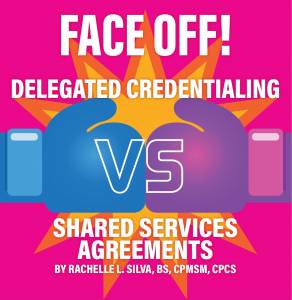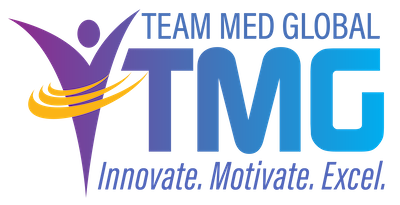 When I was a newbie, I learned a central lesson about credentialing: that to ensure compliance with the standards, the primary source verification documents I obtained for a practitioner were for my facility only, and peer review information was confidential. That changed when shared services agreements began to take hold.
When I was a newbie, I learned a central lesson about credentialing: that to ensure compliance with the standards, the primary source verification documents I obtained for a practitioner were for my facility only, and peer review information was confidential. That changed when shared services agreements began to take hold.
Over the years, four trends have altered the face of credentialing: the rise of hospital-employed physicians, combining medical staff services department credentialing and provider enrollment functions, increased mergers and acquisitions, and the explosion of telemedicine and telehealth services. Delegation, the health system environment, and the implementation of the systemwide CVO have created opportunities to reduce duplication for both facilities and practitioners. The result? Improved customer satisfaction across the board.
Today, most MSPs are familiar with the term “delegated credentialing” and the practice of delegation. In contrast, the shared services agreement (SSA) is a new player in the industry, giving rise to confusion and uncertainty about the terminology associated with delegated credentialing agreements (DCAs) and SSAs.
Let’s clear up misunderstandings by walking through the two processes and highlighting what is alike and what is different in delegated credentialing and shared services agreements.
The Basic Delegated Credentialing Agreement
With DCAs, separate companies agree to work together to complete the credentialing process. For example, a hospital and external CVO may work together, or a health plan and a PHO may work together. In these arrangements, the delegator is the organization agreeing that another organization will perform the credentialing process and the delegate is the organization agreeing to perform the credentialing process for the delegator. For example, Alpha Hospital is the delegator and Beta CVO is the delegate.
With SSAs, facilities working under the same corporate structure with separate medical executive committees and governing board structures agree to work together to complete the credentialing process and share confidential credentialing and peer review information across facilities. In this instance, Alpha Hospital and Delta Hospital enter into an SSA to share primary source verifications and peer review information.
Contracts
With a DCA, the group or facility contract is already in place. For example, Zeta physician hospital organization (PHO) has a group contract with the Iota health plan and the PHO wants to also perform the credentialing process. The delegator performs a pre-delegation evaluation of policies and credential files to ensure compliance with regulatory and accreditation standards. When the delegate’s credentialing program is deemed to be in compliance, the two parties enter into a mutually agreed upon DCA identifying the credentialing responsibilities of both parties.
In an SSA, the written contract is agreed to by all parties, such as the medical staff services department and provider enrollment, or the number of facilities in the health system market. After that, one of three credentialing scenarios occurs:
- The medical staff services department performs the credentialing process and shares verifications with the provider enrollment department, operating under the same TIN, which completes the credentialing process required under the DCA with the delegator;
- Each facility performs its own credentialing process and agrees to share only peer review information with all of the system facilities; or
- The system has an internal CVO performing the credentialing process and agrees to share the verifications and peer review information with all of the system facilities.
Review and Approval Process
Traditionally, CVOs are not involved in the review and approval process. Instead, they complete the credentialing process and release the file to the delegator for review and approval. This remains true for external CVOs.
With a DCA, the delegate brings the completed file to its credentials committee for review and approval, and then notifies the delegator that the applicant/re-applicant has been approved or denied.
In contrast, with an SSA, the following scenarios need to be considered:
- The provider enrollment department, the delegate, presents the completed file that includes shared verifications from the medical staff services department to its credentials committee and notifies the delegate of approval or denial of the applicant/re-applicant;
- The health system medical staff services department presents a completed file that includes shared peer review information from each system facility to its committees and governing board; or
- The health system’s internal CVO presents a completed file that includes shared verifications and shared peer review information from each system facility to the system committees and system governing board.
Delegated Credentialing Reporting and Auditing
DCAs have specific provisions for reporting and auditing. Typically, there is semiannual reporting of credentialing activity from the delegate to the delegator. There are also semiannual requests for the delegator to release quality data to the delegate to be used in the recredentialing evaluation process. In addition, there is an annual delegation oversight audit to ensure policies and the credentialing process remain in compliance with standards.
Telemedicine
With a DCA, one facility is identified as the distant site and the practitioner is able to provide services to each originating site system facility.
Use Cases for DCAs and SSAs
DCAs are heavily used on the managed care side of the industry, but I encourage my colleagues to consider the benefits of entering into a delegation arrangement. Under a DCA, an organization can reduce the time to enroll a practitioner into the managed care network from 90-180 days to 14-30 days. These agreements have a direct effect on the revenue cycle and can be very beneficial for both parties.
As identified above, SSAs are beginning to be seen in both hospital and managed care settings. The SSA allows for organizations working under the same TIN or under the same corporate structure to standardize processes, reduce duplication, and improve turnaround times. All of these outcomes are beneficial to the revenue cycle.
Before entering into a DCA or a SSA work closely with your legal department to ensure the correct contracts are being used to ensure an efficient and compliant credentialing program that benefits all parties.
